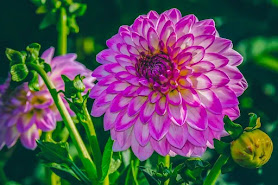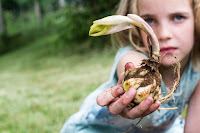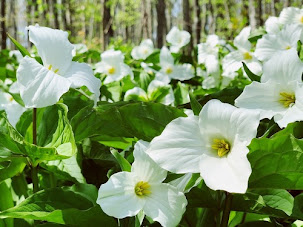If you are seeing your bulbs bloom now, then you have spring (or hardy) bulbs. Tulips, hyacinth, and daffodils are all spring bulbs. These bulbs are planted in the fall, overwinter in your garden, and need that cold period to complete their growth cycle. But there’s another type of bulb – the summer (or tender) bulb. These bulbs don’t like cold temperatures at all and need to be planted well after a last frost date. Summer bulbs include gladioli, dahlias, and lilies. It is an easy transition from one type of bloom to the other, if you follow these few basic steps at this time of year:
• Deadhead your spring-blooming bulbs but leave the foliage intact.
• While deadheading, examine your plants carefully for insect activity. Pest insects enjoy May flowers as much as we do, and you don’t want to introduce them to your next batch of flowers.
• Separate and remove any bulbs that did not thrive.
• Dig up and store any bulbs that need to be kept cool through the summer.
• Keep an eye out for any soil-dwelling pests as you dig into the dirt.• Plant your summer bulbs amongst your spring ones.
• Summer bulbs do well in containers and look lovely on a front step or porch when in bloom.
This article is a wealth of information on bulbs and is laid out in a very easy-to-read format.Nature rewards us in spring with wildflowers. Almost anywhere you go at this time of year, you’ll find some. Here in southern Arizona, we have been tickling summer temperatures for a while now, so our wildflower season is well behind us. But we do have reliable May blooms in the form of saguaro flowers (which is also our state flower). These gorgeous white blooms appear in jaunty clusters on the tops of the saguaros and/or the ends of their arms. Along with the flowery show comes the companion animal of the saguaro, the White-Winged Dove. This pretty little bird migrates to Mexico through the winter and early spring months and then returns to the Sonoran Desert just in time to enjoy the saguaro flowers (and subsequent fruit). This cactus and bird are a perfect example of mutualism in nature, where on species depends on another. I wrote a blog on the dove-saguaro relationship, if you want to know a little more.Desert ecosystems notwithstanding, some of nature’s greatest flower shows are found deep in the forest. It is there, thriving in undisturbed organic material and undiluted by mankind, that you can find truly authentic wildflowers. Some of these beauties only appear for a short time and are known as “spring ephemerals”. If you are lucky enough to have a forest that you can get to in May, I recommend you do so this month. You won’t be disappointed. Here is more on spring ephemerals and forest wildflowers in the Saranac Lake region of New York, but these types of flowers can be found many other places as well.













No comments:
Post a Comment